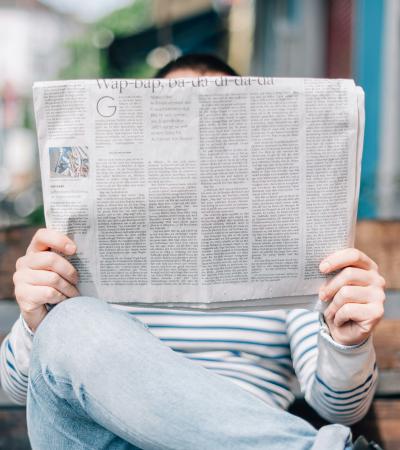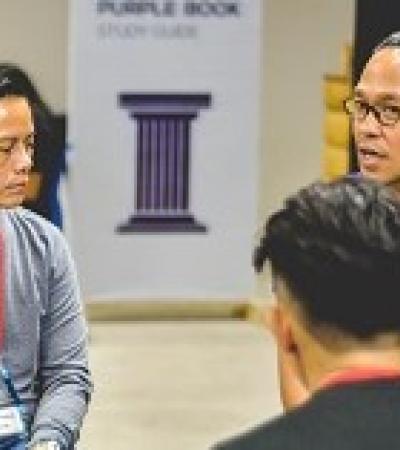Today I am thankful for conversations and program-sharing that happen when librarians can get together to support and expand upon each other’s work. That’s exactly what happened on Thursday, Oct. 6, when the Academic Library Association of Ohio’s Diversity Interest Group hosted its annual workshop at the State Library of Ohio.

The workshop theme, “Building collaborations that support campus diversity,” brought in presenters from around Ohio as well as from the University of Louisville and University of Tennessee, Knoxville. Presentation topics centered on program models that promote diversity and inclusion through community collaboration. The examples they shared and the discussions that followed gave solid evidence that partnerships on campus and beyond ensure that our actions and programs are rooted in community needs and interests. The daylong workshop was full of “ahas” that I’ll share here:
Listen
Having your ear to the ground will introduce you to diversity topics that your campus wants to engage with. I was encouraged to know that surveys about possible event themes can guide the way. Michelle Brannen, Keila Zayas-Ruiz and Megan Venable of University of Tennessee, Knoxville presented on a four-part Lunch and Learn Discussion Series as an opportunity to advance the understanding and practice of diversity and inclusion.
Before they began planning the sessions, they put forward seven topic possibilities for their campus to vote on. The winning topics were civility on campus; bullying in social media; religious tolerance; and gender-inclusive pronouns. Overall, the events helped attendees practice having difficult conversations about diversity topics. Discussions were results-based, so attendees came away with helpful skills. This reminded me that programming should address a community need and that people really want to acknowledge and address the cultural climate.
Learn
Diversity programming lends itself to new and sometimes unanticipated learning opportunities. Ohio State University’s Tuesdays @ Thompson, now called Perspectives @ Thompson, provides a space for scholarly conversations to take place outside of the classroom. Organizers of the series, Sandra A. Enimil, Pamela Espinosa de los Monteros, Leta Hendricks and Sarah Anne Murphy, design the events to be multidimensional, featuring feature music, art and cultural fusion to create a positive experience for attendees. Exhibit cases are organized for each program to highlight local art and often library collections.
The purpose, Espinosa de los Monteros said, is to reaffirm that people who don’t feel comfortable as “experts” on a topic are still welcome participants in the cultural exchange. Murphy described the team’s strategies for assessing this type of open, informal learning. Their post-event survey includes open statements such as, “Today I learned …,” and, “I would like to learn more about …,” and the feedback from these surveys provides ideas for future events.
Lead
Librarians and libraries can be leaders on campus to fulfill a mission and vision; several presenters shared their experiences in connecting mission to diversity outreach, programs and services.
At the University of Louisville, the mission calls for community engagement to enhance the quality of life for residents, and in its vision for 2020, the university identified diversity, opportunity and social justice as one of five critical areas. Outreach and reference librarian Fannie M. Cox shared her experience in connecting library programming to the mission and vision through its outreach to underrepresented communities such as adult learners and the homeless.
At the University of Tennessee, Knoxville, the library’s diversity committee is the oldest and largest on campus. After the state legislature cut funding for diversity initiatives, the library stepped in to fill the gap, creating the Lunch and Learn series on diversity and inclusion. Librarians also lend their experience and demonstrate their commitment to diversity and inclusion by attending protests, rallies and campus conversations on the topic and fostering an important space for diversity and inclusion.
The final presenter of the day, Katy Mathuews of Ohio University, connected the presentations and discussions to a final call to action to move beyond common diversity initiatives to address true social justice issues embedded in our systems and the way we do things. Libraries, she said, can push the boundaries of traditional diversity programming to think critically and be mindful about inclusion in library systems (services, collections, language). See Mathuews’ recent article in Progressive Librarian for examples and more information.
All of the presenters showed how diversity program design can truly encompass cultural competencies and inclusion. Libraries can provide the space, collections and expertise to support campus diversity. Strong partnerships ensure the impact and sustainability of these efforts.
* About those balloons, though: The photo featured is a nod to our conversation during the workshop about searching for images with the keyword “diversity.” Typically, you’ll find abstract photos of colorful fruit, paint or crayons. We were reminded, though, that color is only one aspect of diversity. Please accept this random but pretty photo of balloons by Luca Upper, which I located thanks to Rebecca Starr’s blog on free image sources.
Thank you to the ALAO Diversity Committee and the presenters of this year’s workshop.


